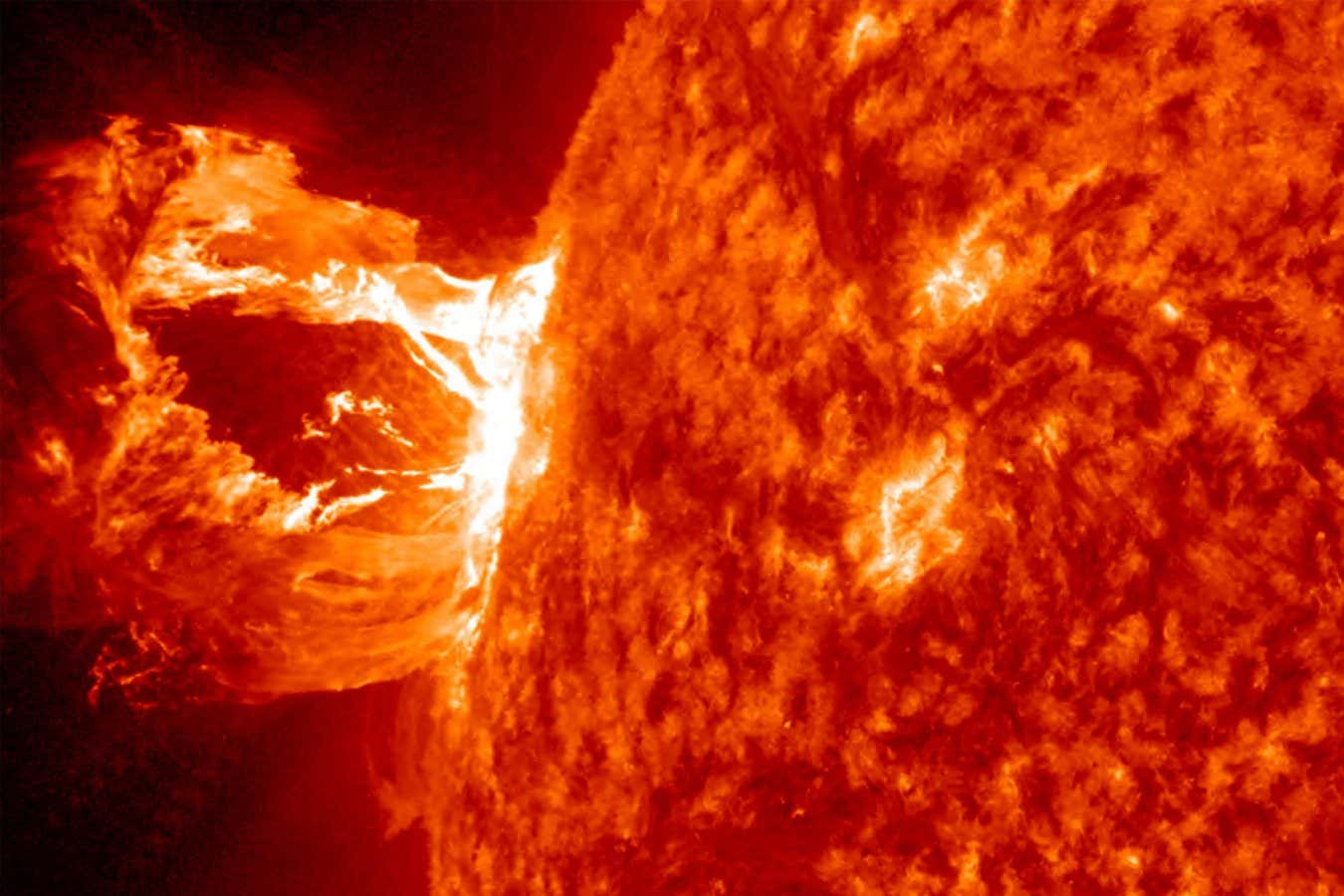By comparing the rings of 140 trees buried in the bank of a French river, researchers estimate that the largest solar storm that we know of occurred 14,300 years ago
By Alex Wilkins
9 October 2023
A solar flare, an explosion on the sun that happens when energy stored in “twisted” magnetic fields is suddenly released
NASA/SODATA/Alamy
The most powerful solar storm ever may have hit Earth 14,300 years ago, according to records preserved in Alpine tree trunks. It is unclear how much damage a similarly powerful storm might cause today, but electricity grids could theoretically be knocked offline for months and all satellites destroyed.
In 2012, Fusa Miyake at Nagoya University in Japan discovered evidence in tree trunks of extremely powerful solar flares – charged particles expelled from the sun that, along with magnetised plasma and gamma rays, make up solar storms. These flares, which date back many centuries, may have caused a spike in the level of a radioactive form of carbon in trees.
Since then, at least nine probable ancient solar storms have been discovered in this way, called Miyake events.
Advertisement
Now, Tim Heaton at Leeds University in the UK and his colleagues have found evidence of the largest solar storm ever, almost twice as large as the next largest Miyake event, in pine tree trunks in the southern French alps.
“We don’t totally know what would happen if a similar storm happened today,” says Heaton. “Some people think they would be absolutely catastrophic, cause huge month-long blackouts to half the globe and destroy the solar panels on our satellites and put them permanently out of action.” Other predictions suggest much less disruption than this, but there is a lot of uncertainty, says Heaton.
Heaton and his team looked at 140 different tree trunks buried in a bank of the Durance river in Provence. As the bank eroded, the trunks were exposed and the team could look for raised levels of carbon-14, a kind of carbon that has two more neutrons than normal and is produced by energetic particles hitting Earth’s atmosphere.
